There is a lot that goes into getting ready for the fall and holidays, but many homeowners assume that pest control is not one of them. While some pest populations decrease with the emergence of cooler weather there are some that begin to become active or thrive in these conditions.
Due to lower temperatures and consistent rainfall patterns, many insects and rodent pests look for warmer, and drier places to spend the winter season. Unfortunately, with the abundance of food and trash from holiday celebrations and the warmth your home provides becomes an enticing invitation to fall pests. Common fall pests that you should prepare for are mice, rats, bed bugs, ants, stink bugs, bees, yellow jackets, hornets, and cockroaches.
While signs of these fall pests may not be visible it best to pest proof your home before activity occurs. To further protect your home during the fall season, follow the attached links and use the recommended products to successfully remove these fall pests from your home.
Rodents

As the weather becomes colder, mice and rats will create nests in the walls of your home, attic, or basement. Rats and mice are mammals that have hairless tails and sharp teeth and claws that help them to chew wires or dig into the surface of a wall.
Capable of inflicting cosmetic to structural damages in your home and diseases due to their ability to travel through pipes and plumbing makes this one of the less ideal pests to encounter in your home. If left untreated, these prolific pests are known to breed and produce young in a short time period. Mice can produce up to 6 pups (babies) every 3 weeks whereas rats can have an average of 10 kittens (babies) every 3 weeks.
To treat rats and mice, we recommend placing Eratication Rodent Bait inside a tamper proof rodent station such as Solutions Rat and Mouse Bait Station. Eratication Rodent Bait is a synthetic rodenticide formulated with peanut butter and seeds to entice rodents to chew on the product and perish within 5 to 7 days after ingestion. This is ideal for treating rodents, because these pests are very cautious in nature and will avoid products that generate suspicion.
For indoor areas such as crevices and voids you will need to use the Solutions Professional Rat and Mouse Glue Tray. As the name implies this trap is formulated with an inescapable glue that traps small to large rodents. When using any of these products you will need to wear personal protective equipment (PPE) such as gloves for your safety and to hide your scent from rodents when placing these products.
Bed Bugs

Despite the name, bed bugs are blood dependent pests that invade furniture, picture frames, bed frames, and other hard to reach areas like outlets in hotels, motels, and your home. These pests are especially irritating due to their ability to multiply quickly and invade the smallest of crevices.
Unfortunately, bed bugs are a year-round pest that can survive warm or cold temperatures. Fall is a prime time for these pests to invade homes due to homeowners or family members traveling and staying in multiple different environments such as hotels. For this reason, bed bugs have gained the colloquial name hitch hiking pests since they travel by clinging to the fibers of your clothing, suitcase, and sometimes shoe laces.
The main thing to do when faced with a bed bug infestation is to leave all belongings in their original place. Moving infested objects can spread the bed bug infestation further into the interior or exterior of the home. When staying in a hotel environment, you will need to follow bed bug traveling protocol by inspecting the room before placing personal belongings on the rooms ground or furniture.
We recommend cleaning and vacuuming your homes curtains, bed sheets, pillow cases, floor, and other cloth materials. Carry clothing and cloth material items in a plastic bag to avoid dropping bed bugs in areas not already infested. Place cloth items into washer and dry on high heat (above 120 degrees Fahrenheit). Apply Flex 10-10 Insecticide to your mattress, furniture, and floor. Once these areas have been treated you may then add in 1 oz. of Gentrol IGR per gallon to the Flex 10-10 solution to treat 1,500 sq. ft. and may apply to bed frames, box spring, furniture, closet, flooring, and along the baseboards of rooms. Remember that Gentrol IGR cannot be used on mattresses.
Treat cracks and crevices of bed frame, headboard, box spring, and furniture with Pyrid Aerosol. Next, treat wall voids, light switches, electrical outlets, under frame legs, and other areas where inaccessible openings are found with D-Fense Dust.
Ants

While not immediate, most ant species like the carpenter ant create structural damages to the wood and foam insulation of your home over time. Additionally, ants are enticed by the warmth, excess of food, and moisture located around your sink, plumbing, counter tops, and underneath kitchen appliances.
Ants are a difficult pest to deal with since they live in large populations called colonies. In these colonies, there are worker ants who go into your home to search for food and suitable living conditions to escape the cold. These pests go unnoticed by most homeowners since they have one to three worker ants traveling through cracks and crevices of your homes kitchen, bathroom, and floor boards. When these environment conditions are found, ants will leave behind a trail of pheromones behind them to lead members of its colonies to the source of food or possible new home.
To remove ant infestations, spray cracks and crevices with injection tube straw of FiPro Foaming Aerosol. As a foaming product it expand into hard to reach areas where ants frequently travel. Once ants come into contact with FiPro Foaming Aersol they perish within 10 minutes. Next, you will want to treat the exterior of your home with Supreme IT. This product is a long-lasting insecticide that treats various insects, such as ants for up to 90 days. For a general ant application, spray 1 oz. of Supreme IT per gallon of water per 1,000 sq. ft. You will also want to spray a height of 3 feet up and 6 to 10 feet out from the structure.
Stink Bugs

Stink bugs are sensitive to the cold temperatures of fall, which pushes them to invade your home, garage, and attic. However, the idea of sharing your home with this stinky pest is less than ideal. This pest secrets an extremely foul smelling odor when they are frightened or crushed hence their name.
Although harmless to people, this pest congregates in large numbers and attracts other members of its species. Once inside your home, these large numbers of stink bugs will not only emit disgusting odors, but also feed on indoor house plants.
To keep stink bugs out, you will need to perform an application of Supreme IT as barrier and broadcast treatment across your yard and home. For indoor applications, apply D-Fense Dust into cracks and crevices of home especially in areas near windows and door frames. Seal voids, cracks, and crevices with caulk if it has not already been performed.
Bees, Yellowjacket, and Hornet

Stinging insects like bees, yellowjackets, and hornets are common in the summer, but most aggressive and rampant in the fall. Several reasons for this could be based on the fact that these pests use the warm, summer months to build their nests and colonies. Then when fall arrives, these pests larvae reaches full maturity and increases bees, wasps, and hornets populations.
Most populations of bees, yellowjackets, and hornets will not sting unless they feel threatened or if you are approaching too close to their nests. Combined with the cooler weather, these stinging pests are more likely to be encountered as they search for other food sources since natural resources like flowers and other insects will be decreased. With increased populations, activities, and nests this may prove to be an issue for homeowners since these pests like to create their homes in soffits, inside chimneys, vents, around window crevices, shrubbery, trees, woodpiles, and inside existing holes or crevices of structures.
Depending on the pest you are encountering these treatments will vary. The first thing to do is search for areas where bees, yellowjackets, or wasps may be hiding. Once you have determined where they are you will need to apply Stryker Wasp and Hornet Killer for yellowjackets and hornets or FiPro Foaming Aerosol for bees. Then using Sylo Insecticide for hornets and yellowjackets and Dominion 2L for bees. Lastly, treat holes and voids that cannot easily be sealed with D-Fense Dust for hornets and yellowjackets and putty on holes created by bees.
Cockroaches

Cockroaches are resilient pests that are widely known for invading the inside of homes, garages, attics, bathrooms, and basements. Like rodents, cockroaches bring diseases with them as they travel through sewer pipes, plumbing, and ingest fecal or bacteria matter. Unfortunately, these pests can survive extremely cold weather, but they prefer to live in warm, moist environments.
Besides the sources of food and water, these pests invade your home to escape the possibility of going into a state of hibernation known as diapause. During this phase, cockroaches metabolism slows down causing these pests to be unable to grow or reach sexual maturity depending on their life cycle. For this reason, cockroaches are more motivated than usual to invade your home during the fall season.
If you have holiday decorations stored outside then try to open all packaging outside of your home to keep cockroaches and other invading pests like rodents, ants, and stink bugs out. Even though the fall season proves to be busy with multiple events and weather changes, you will need to store all exposed and opened food into tightly sealed plastic containers and clean any surface containing crumbs or grease. Next, you will want to use Apex Roach Gel Bait and Ficam before using an insecticide like Supreme IT. You will want to use these products first to allow cockroaches to spread the materials to other cockroaches and into areas where you cannot easily apply products like wall and plumbing interiors.
Key Takeaways
Pests that Invade Homes During the Fall
- Mice, rats, bed bugs, ants, stink bugs, and cockroaches depend on the humidity and moisture levels in your home during the fall season. Pests that invade your homes exterior more frequently are bees, yellowjackets, and hornets.
How to Get Rid of Fall Bugs
- First, inspect areas where insects and rodents are traveling and frequently visiting such as wall voids, cracks and crevices, and other gaps around your home. Once you have determined the location of these pests conduct a pesticide treatment with the product mentioned in this article while wearing the appropriate personal protective equipment (PPE). Retreat as needed or by the maximum days of reapplication on the product label.
Why Do Insects and Rodents Invade Homes During the Fall?
- As the heat from the summer decreases, insect and rodent pests seek warmer and moist conditions that your home provides during the fall season. Pests like cockroaches, stink bugs, and ants are the most sensitive to the cooler temperatures and seek the warmth of your home. Mice, rats, bees, yellowjackets, and hornets often invade residential properties and interior of homes walls to create suitable nests. Depending on the amount of travel you or your family members have done will determine bed bug infestations.

